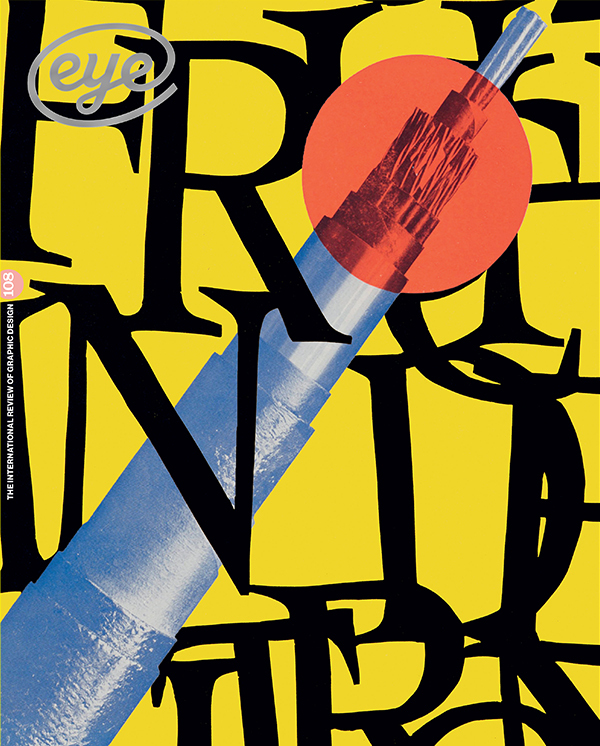Spring 2025
Going off the grid
Thomas Schostok
Aaron L. Beebe
Chris Ferebee
Chris Bigg
Sameena Sitabkhan
Raphaël Vicenzi
Paul B. Drohan
Jeffery Keedy
Mr. Keedy
Critical path
Graphic design
Magazines
Plastikcomb magazine looks back to 1990s graphics with stylish aplomb … and a focus on contemporary collage-makers.
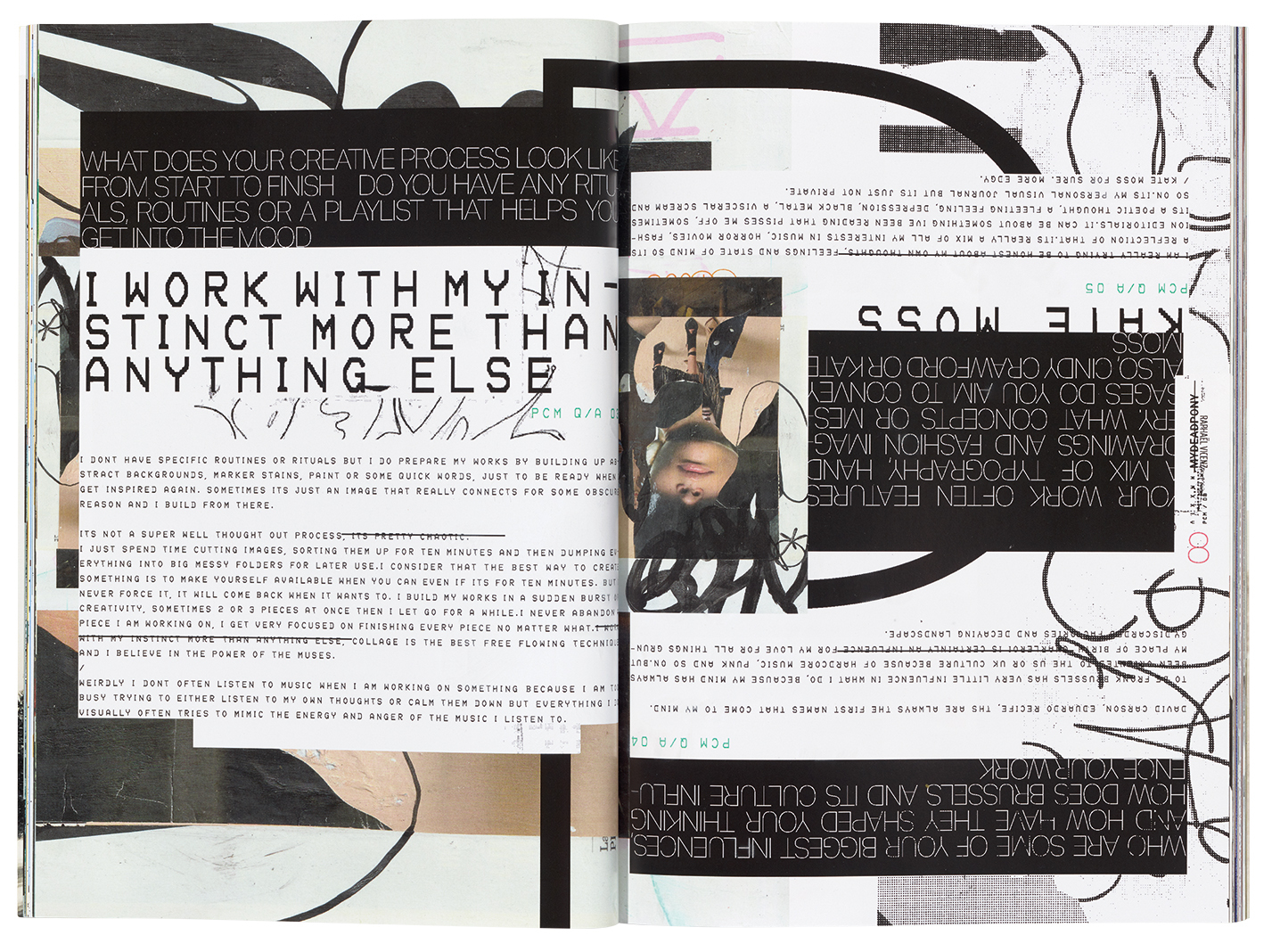
For anyone who remembers the 1990s, Plastikcomb is a fascinating novelty. The magazine, which aims to fuse art with graphic design, launched in 2020 and has published eight bi-annual issues to date. At first sight it looks like an homage to the David Carson era by some bedazzled members of Generation Z out to embrace a cool, less processed, more chaotic aesthetic. I have observed for myself Ray Gun’s appeal to a minority of naturally rebellious contemporary design undergraduates who also admire 1970s punk graphics. Could it be that mangled typography and pulverised layouts are on the cusp of some kind of revival?
It seems unlikely because, turbulent as our times might be, that was a typographic style invented for paper, not phones. In any case, Plastikcomb’s founders, Aaron L. Beebe and Thomas Schostok, appear to be in their forties, so they experienced the excitements of 1990s graphic design in their youth. ‘Do you miss the days of Raygun and BLAH BLAH BLAH magazine?’ Beebe writes nostalgically on Medium. In issue 8, one of their interviewees namechecks Ray Gun and Carson as influences, while another attended an artist residency with Carson at the Atlantic Center for the Arts. A third interviewee cites the late Vaughan Oliver and the 4AD record label – ‘My world was blown apart, in the best possible way.’
Plastikcomb magazine, founded by Aaron L. Beebe and Thomas Schostok. Cover and spreads from issue no. 8, 2024.
Right. Cover design by Bill Douglas. Top. Interview with Raphaël Vicenz. Interview and design by Paul B. Drohan.
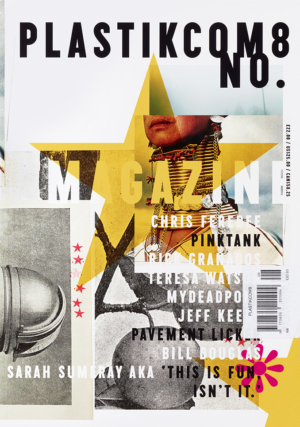
In 2001-02 Schostok, who is based in Germany, created twelve issues of a pdf magazine titled Beast. Its style was explosively grid-less. Beebe, an American, describes himself as a design school dropout who always wanted to be an art director. He spent years in local government and bureaucracy before moving to Alaska in 2024 to work in the National Park Service.
Beebe and Schostok want Plastikcomb to bust loose from the ‘orderly grids of contemporary magazine design’ and respond graphically to the artwork they feature. Well conducted interviews are the main content, each one assigned to a different designer, including guests. In issue 8, Chris Bigg – former partner of Vaughan Oliver in v23 – designs the pages for Chris Ferebee, photographer, furniture designer, graphic designer … and fan of Chris Bigg. Typographically, these uniform columns of unvarying type form the most restrained pages in the issue.
Interview with Sameena Sitabkhan by Aaron L. Beebe. Design by Thomas Schostok.
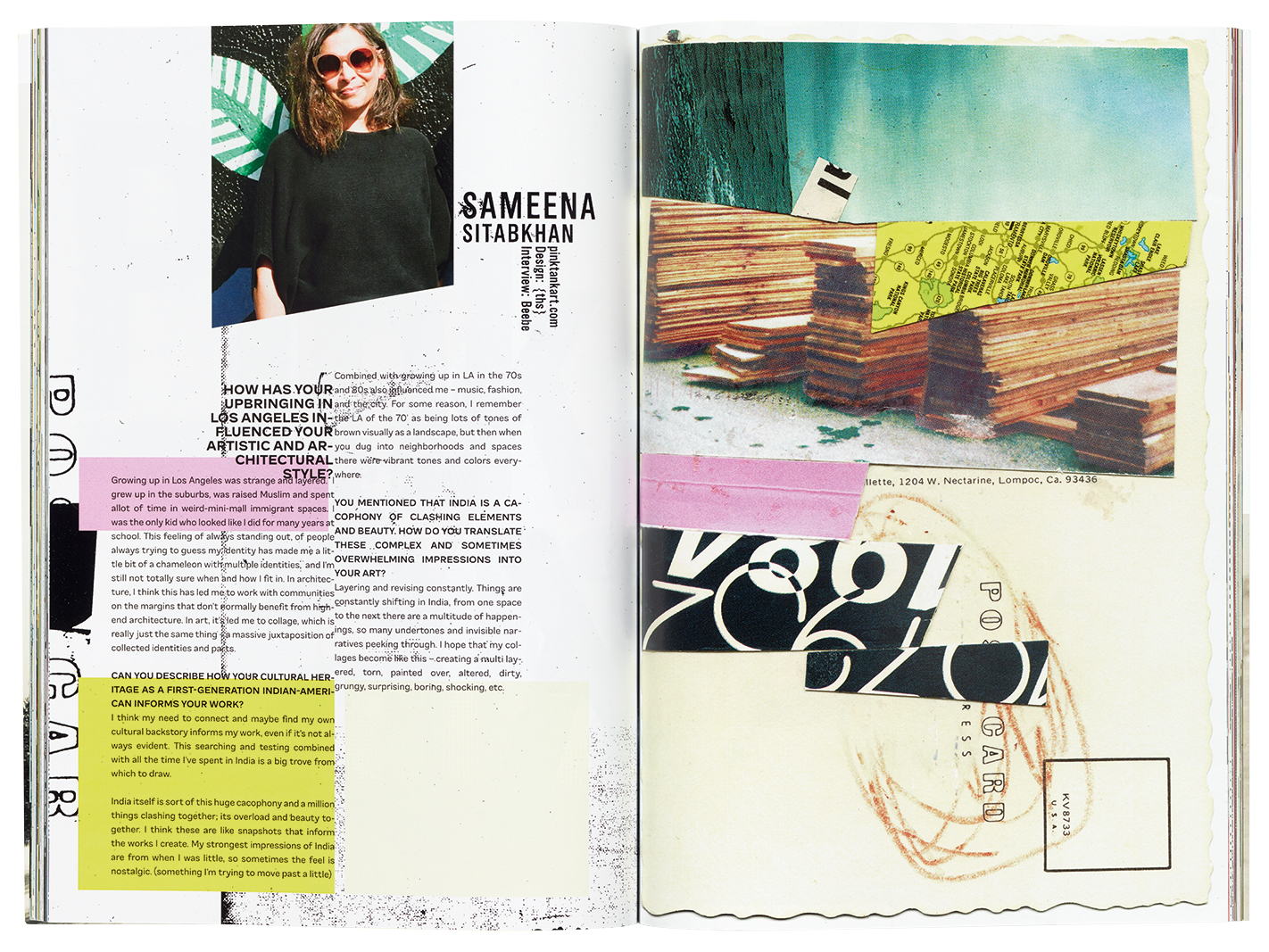
In other features, the designers let rip. In an interview with Raphaël Vicenzi, a collage-maker from Brussels, who boasts the name Mydeadpony, the type reads in three directions, requiring constant turning of the pages. The type styles are mismatched (by conventional standards) and everything is set in uppercase. Some possibly contentious words are crossed out, though still readable. Paul B. Drohan, the designer, jigsaws together patches of type comprising questions and answers with scrawled graffiti, collages by Vicenzi composed mainly of fragments of models from fashion magazines, and other graphic shapes. The pages are denser and more scrambled than even the wildest layouts in Ray Gun, but the ‘grungy punk aesthetic’ (Vicenzi’s term and aim) is not impossible to navigate with a little effort.
In the absence of an underlying grid, Plastikcomb’s organisational principle is collage. Anything can go anywhere if the designer feels it works. This was the method used by Ray Gun, Blah Blah Blah (designed by Chris Ashworth, Neil Fletcher and Amanda Sissons), Speak magazine (Martin Venezky), and many lesser 1990s projects. The artists’ collages Plastikcomb often showcases become fragments in the multi-page editorial collages that constitute the features. This allows for some striking variations in mood. The interview – designed by Schostok – with artist / architect Sameena Sitabkhan (a first generation Indian-American based in Los Angeles) has quieter typography, more white space and a sumptuous sensation of colour. Sitabkhan’s collages, using the name Pink Tank, collide influences from punk, grunge, Bollywood and the LA streets.
Text, collage and design by Jeffery Keedy.
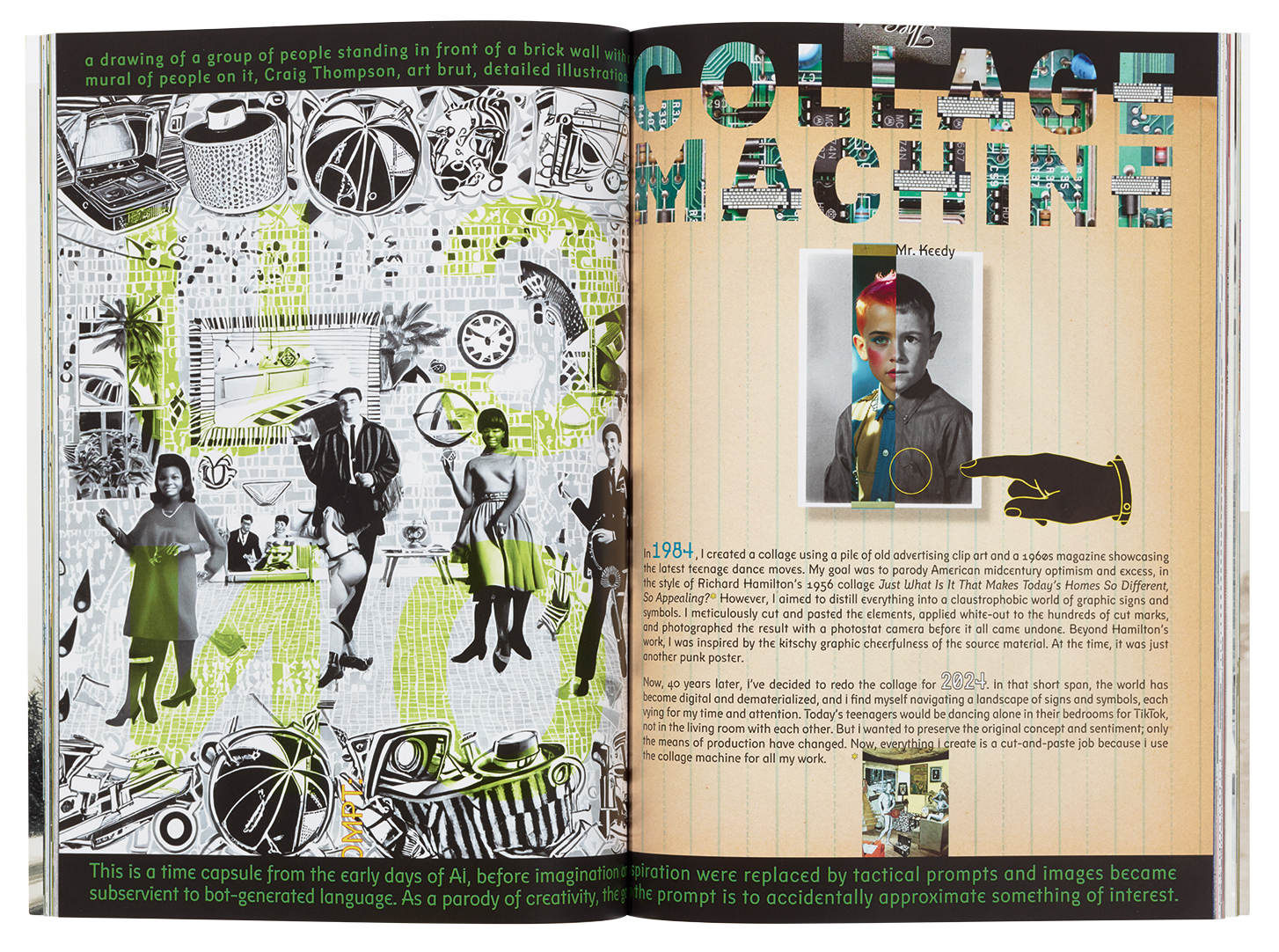
Issue 8’s most enigmatic contribution, ‘The Collage Machine’, steps back and takes a meta-level view of its surroundings. The author, Jeffery (‘Mr.’) Keedy, another key figure in the 1990s (see Eye no. 20 vol. 5), uses a collage from 1984 as a starting point for some characteristically sardonic observations about a medium that is never truly new because it is always recycling the past, but ‘perfect for generating novelty’. If the computer is a collage machine, he proposes, then artificial intelligence is its language, and recursion (being trapped and limited by a program’s rules) is the inevitable outcome.
That gloomy prognosis suggests the pleasure we continue to derive from collage, once a revelatory avant-garde technique, is unlikely to last. Eventually everything will be ‘smoothed over’ (Keedy’s prediction) and drained of any last dregs of meaning. To designers who see their task as imposing structure and order, Plastikcomb might look like a wilful surrender to confusion and discord. That would be a misreading. A magazine cannot offer concrete resistance to the world as we find it, but it can express a yearning for a different or better reality and offer readers a sustaining artistic refuge. Plastikcomb does this with defiantly ramshackle aplomb.
Rick Poynor writer, Eye founder
First published in Eye no. 108 vol. 27, 2025
Interview with Chris Ferebee by PCM (Plastikcomb). Design by Chris Bigg.
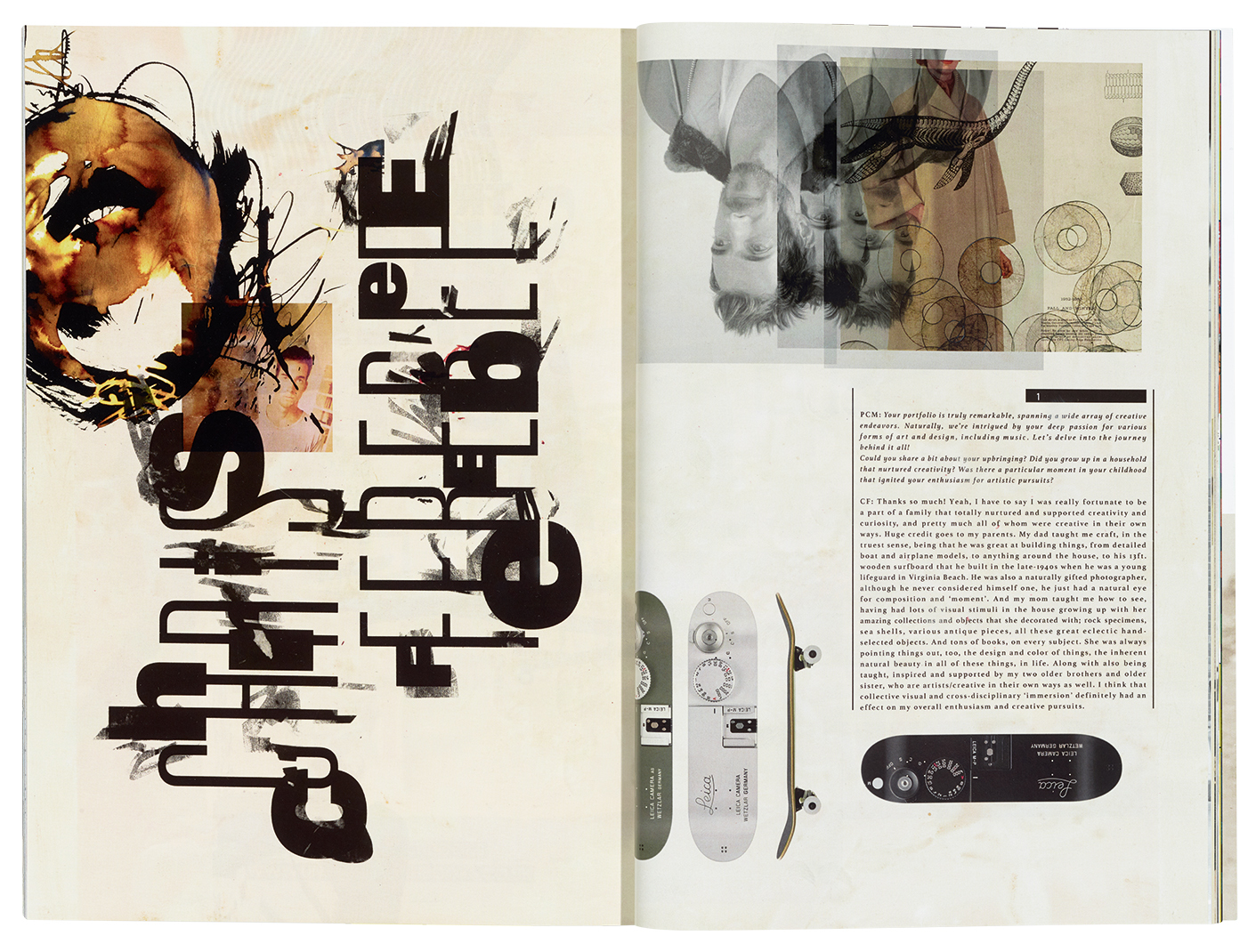
Eye is the world’s most beautiful and collectable graphic design journal, published for professional designers, students and anyone interested in critical, informed writing about graphic design and visual culture. It is available from all good design bookshops and online at the Eye shop, where you can buy subscriptions and single issues.

